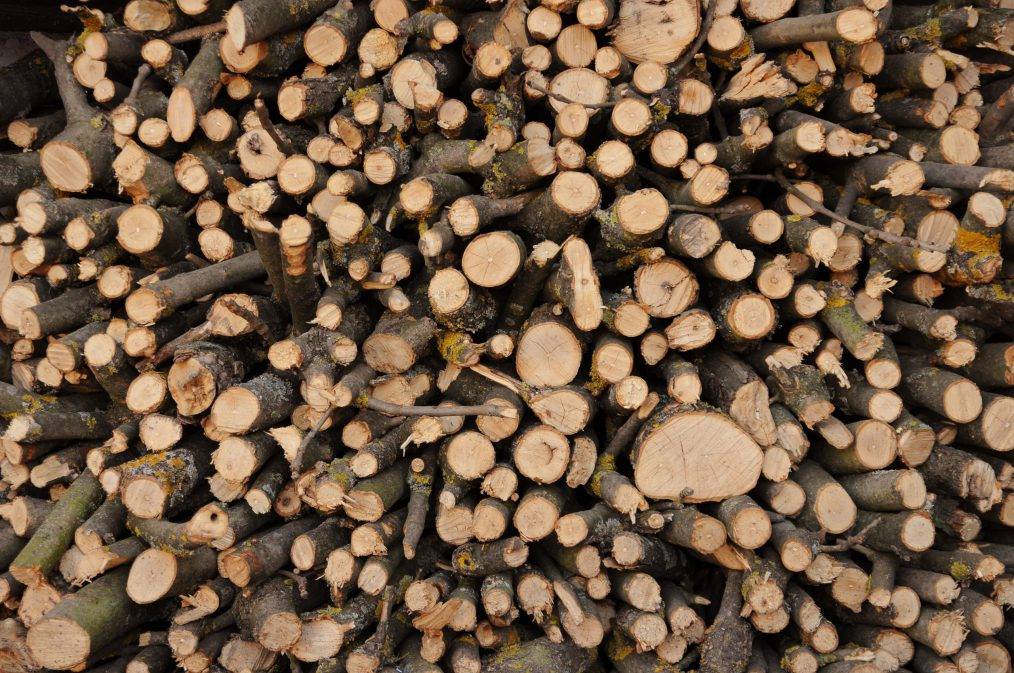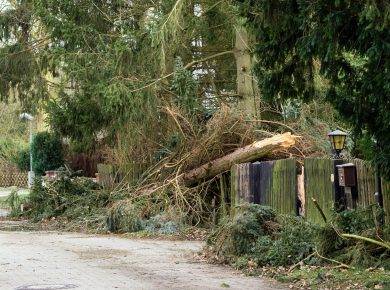Tree Removal Costs
Figuring out how much it costs to remove a tree can seriously lower the stress in neighbor disputes. Below, you’ll get the lowdown on typical prices and what can make them swing higher or lower.
Average Cost Range
On average, getting rid of a tree costs between $385 and $1,070, usually sitting around $630 (LawnStarter). Nationwide, you’re looking at about $1,100, but that can range from $200 to $2,000, depending on size, location, and other factors.
| Cost Type | Average Cost | Typical Range |
|---|---|---|
| Usual Cost | $630 | $385 – $1,070 |
| National Avg Cost | $1,100 | $200 – $2,000 |
| Cost per Foot | $10 – $14 |
Factors Influencing Cost
A bunch of things can affect the cost of tree removal, like:
-
Tree Type: Not all trees are equal. Some have tougher wood and need more time and effort to cut down.
-
Size of the Tree: Bigger trees cost more due to more labor and gear needed. Costs typically range from $341 to $1,523, depending on size.
-
Tree Health: Dead or dying trees may need special handling, which can add to the cost.
-
Accessibility: Is the tree hard to get to? Special equipment might be needed, and that’s gonna cost you extra.
-
Location: Local laws and fees can also spice up your bill.
Not sure who pays for tree removal when neighbors are involved? Check out our articles on who handles fallen tree removal costs and what happens when a neighbor’s tree falls on your house for more deets on sorting out these disputes.
Standard Tree Removal
Dealing with the financial side of tree removal? It can help calm neighbor disputes about who’s responsible for what and the costs involved. Let’s break down the typical expenses and extra charges you might run into.
Cost Breakdown
Tree removal costs vary quite a bit. Homeowners usually shell out between $385 and $1,070, with the average being around $630 (LawnStarter). Here’s a quick table giving you the lowdown on what different types and sizes of trees might cost you:
| Tree Type/Height | Average Cost Range |
|---|---|
| Small Trees (up to 30 ft) | $400 or less |
| Medium Trees (30-60 ft) | $800 – $1,200 |
| Tall Trees (60+ ft) | $1,200 – $2,000 |
| Mature Ash Trees (40-80 ft) | $800 – $2,000 |
| Cedar Trees (varying heights) | $500 – $2,000 |
| Mature Maple Trees (60-100 ft) | $1,100 – $2,000 |
| Mature Oak Trees (60-80 ft) | $700 – $1,300 |
| Palm Trees | $300 – $900 |
| Pine Trees | $300 – $3,000 |
Some companies price their work per foot of tree height. That can start around $8 per foot for smaller trees and go up to $15 or more for the bigger ones (Architectural Digest).
Extra Charges
Watch out for hidden costs! If a tree’s in a tricky spot, like near your house or power lines, expect the bill to jump by as much as 50%.
Other things that could bump up the price:
- Hazardous Tree Removal: Dead or weakened trees might need special handling, adding more to your bill.
- Location: Prices can vary depending on where you live and the demand for services.
- Permitting: Some areas require permits for tree removal, which means extra paperwork and fees.
- Height Measurement: Companies often measure tree height before finalizing the cost, which can impact your final price.
Sorting out who’s paying what in a tree dispute? Knowing these costs can help you have smoother talks with your neighbors. For more info on tree responsibilities, check out who is responsible for fallen tree removal and who is responsible for cutting overhanging tree branches.
(Remember, tree removal isn’t just about clearing space; it’s about safety and property value, so make sure to choose wisely!)
Emergency Tree Removal
When a tree’s causing trouble—like it suddenly falls over or looks like it might—it’s time for emergency tree removal. This can be pricier and more complex than just chopping down a tree on a calm day.
What’s It Gonna Cost?
Emergency tree removal ain’t cheap. You’re typically looking at $2,500 to $5,000. Costs shoot up if the tree’s in a tricky spot—think near busy roads, power lines, or coming down on your roof. These jobs can run from $2,500 to $4,000, with extra fees for special gear like ropes or cranes (Architectural Digest).
| Scenario | Estimated Cost |
|---|---|
| Basic Emergency Removal | $2,500 – $5,000 |
| Tricky Spots (e.g., near power lines) | $2,500 – $4,000 |
| Dangerous Lean | Up to $5,000 |
These prices reflect the urgency and the extra hassle of safely removing a tree that’s in a tricky spot (LawnStarter).
What You Need to Think About
When you’re in a tree emergency, keep these in mind:
- When You Call: Night-time or weekend emergencies will cost more—think late-night rates.
- Job Difficulty: Special tools or more crew members mean higher costs.
- Tree Damage: If the tree’s already caused damage, you might need to look into legal responsibilities. Check out articles like who is responsible for fallen tree removal and neighbors tree fell on my house.
With emergency situations, being quick and ready can save you big bucks and avoid headaches with neighbors. For more info on dealing with trees on property lines, check out tree on property line.
Stump Removal Costs
Getting rid of that pesky tree stump involves balancing costs whether you bring in a pro or roll up your sleeves for a DIY approach. Let’s break down the costs for stump grinding and doing it yourself.
Stump Grinding Costs
On average, knocking back that stump through grinding sets you back around $300. This covers both grinding and getting rid of the remains. Prices float depending on the size and hassle factor of your stump, ranging from a basic rate for smaller stumps to heftier charges for the bigger guys.
| Stump Size | Average Cost |
|---|---|
| Small (starter fee) | $100 |
| Medium (approx. 10-12 inches wide) | $300 |
| Large (think 24 inches or more) | $500 |
Most tree services charge between $2 to $4.50 per inch of stump diameter, measured across the beefiest part of the stump. If your tree’s root system is more complex or the stump is hard to get to, expect a bill between $100 to $400 depending on these factors (Forbes, This Old House).
DIY Options
For the DIY warriors out there, stump grinding can run about $500. This cost breaks down into around $250 for tools and safety gear, plus another $250 per day to rent a stump grinder. Keep in mind, those rental grinders are usually best for small stumps.
If you go for the DIY route, it’s key to arm yourself with the right safety gear. Seriously, you don’t want to mess around with this stuff. Grab a guide on how to wrangle a rented stump grinder if you’re new to the game.
Need more dirt on tree-related disputes? Check out topics like who’s on the hook for a fallen tree and my neighbor’s tree did a number on my house. Knowing these deets can help squash any tree drama with your neighbors.
Tree Trimming Costs
Neighbors feuding over who should handle those pesky branches? Here’s the lowdown on tree trimming costs.
What You’ll Pay
The bill for trimming trees can vary widely, from $75 to $1,000. Here’s what influences the price:
- Tree’s Size: Bigger tree, bigger bill.
- Location: Hard-to-reach spots mean higher quotes.
- Tree Health: Sick trees need extra TLC, so expect to pay more [Renstrom Tree Service].
Check out this quick cost guide based on tree size:
| Tree Size | Cost |
|---|---|
| Small (up to 30 feet) | $75 – $400 |
| Medium (30 to 60 feet) | $200 – $600 |
| Large (over 60 feet) | $500 – $1,000 |
Call in the Pros
Thinking about grabbing a chainsaw and trimming that tree yourself? Hold up! Bigger trees or tricky spots mean more risk. Certified arborists have the skills to safely get the job done without you or your property getting hurt.
Caught in a neighborly spat about tree upkeep? Hit the law books or check local rules on who cuts overhanging branches. Pros also offer written tree evaluations to help settle those debates.
Don’t just stop here if you’re knee-deep in tree trouble. Whether it’s fallen trees or one growing right on the property line, dig into these resources for some clarity on who should handle what.
Cleanup and Chipping After Tree Removal
So, you’ve chopped down that tree—now what? Let’s talk about the often-forgotten yet crucial steps that come next, like cleaning up the mess and turning that tree into something useful. We’re diving into post-removal services like debris removal and wood chipping, which can save you from having a junkyard for a yard and help keep the peace with your neighbors.
Cleaning Up the Debris
After a tree bites the dust, you’re left with a mess of branches and leaves. Cleaning this up typically costs anywhere from $50 to $100 per hour in places like Minneapolis, MN (Renstrom Tree Service). Clearing out this stuff is crucial for keeping your property neat and sidestepping any squabbles with your neighbors about who should deal with the mess.
| Service Type | Cost Range per Hour |
|---|---|
| Debris Removal | $50 – $100 |
The cleanup bill can depend on a few things: how much junk there is, how long it’s going to take, and how easy it is to get to the mess. Always check local prices because they can be all over the map depending on where you’re located and who you hire.
Turning Trees Into Chips
Another way to deal with post-tree-removal mess is wood chipping. Many tree services offer chipping, and it usually runs you between $75 to $150 per hour (Renstrom Tree Service). Chipping turns all that wood into mulch, which can be a blessing for your garden.
The size of the tree influences the chipping cost. For a typical oak tree, you’re looking at $75 to $150. But if we’re talking about a massive tree, it could jump up to $300 to $500 because bigger trees mean more work and bigger equipment.
| Tree Size | Chipping Cost Range |
|---|---|
| Average Oak Tree | $75 – $150 |
| Larger Trees | $300 – $500 |
Professional chipping not only keeps waste down but also gives your garden a boost, enriching the soil with organic matter. While you’re crunching the numbers, remember that these post-removal steps can add to the overall tree-removal cost. This becomes extra relevant if you’ve got nosy neighbors who love to argue over fallen branches.
Keeping open lines of communication with your neighbors during this process can prevent arguments about whose problem the debris is. For more advice on handling neighborly disputes, check out our articles on who is responsible for fallen tree removal and who is responsible for cutting overhanging tree branches.
So, while the tree’s down, make sure the clean-up doesn’t get you down too. And maybe win a few neighborhood kudos while you’re at it!










